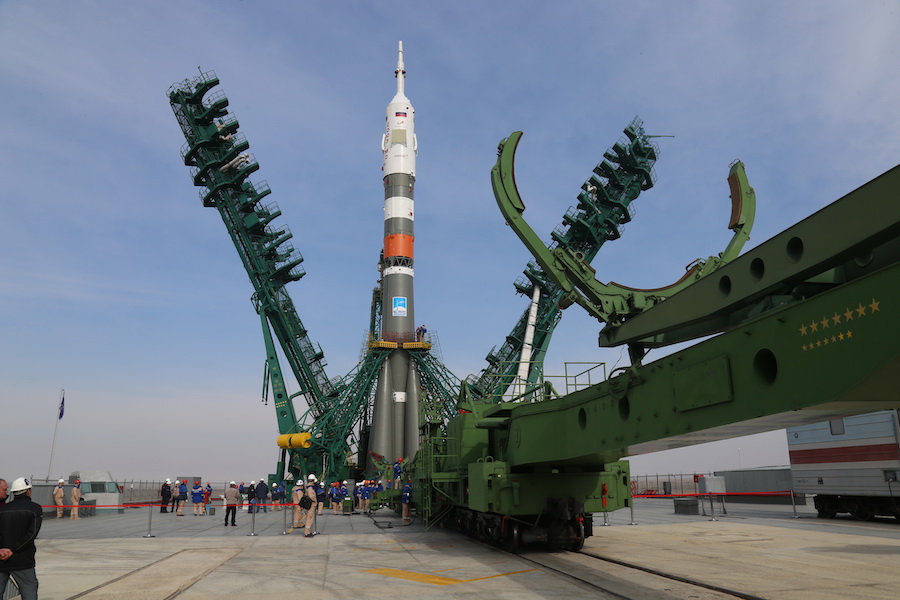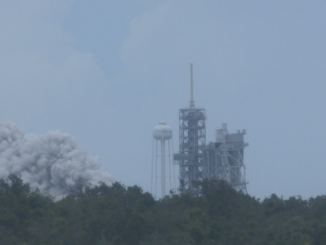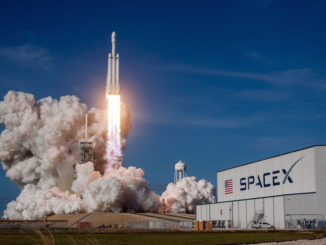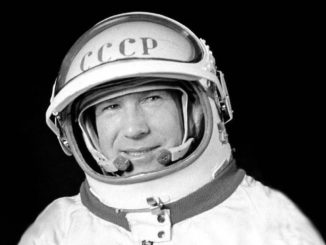A Russian Soyuz-2.1a rocket rolled out to a launch pad Monday at the Baikonur Cosmodrome in Kazakhstan, ready for the first crewed flight to use the modernized Soyuz booster configuration. Liftoff with two Russian cosmonauts and a veteran NASA astronaut is scheduled Thursday on an expedition to the International Space Station.
Preparations for crew and cargo launches to the space station are proceeding amid the global COVID-19 coronavirus pandemic. The orbiting research lab has cost the U.S. government and partner nations more than $100 billion over three decades, and maintaining the outpost requires regular crew rotations and supply deliveries.
But there are restrictions imposed for this week’s crew launch. The crew’s families and media representatives are barred from attending the launch at Baikonur due to concerns about the pandemic. Instead, family members and journalists will watch the launch on television.
The liquid-fueled Soyuz rocket emerged on a railcar from its assembly hangar — known by the Russian acronym MIK — around sunrise Monday for the railroad journey across the Russian-operated cosmodrome to the Site 31 launch complex.
After arriving on the pad deck, a hydraulic erector lifted the Soyuz-2.1a launcher vertical. Folding gantry arms were later raised into position around the Soyuz rocket to provide access for technicians to ready the vehicle for liftoff.
The launch is scheduled at 0805:06 GMT (4:05:06 a.m. EDT) with nearly a million pounds of thrust blazing from 32 engine nozzles.
Liftoff is timed for 1:05:06 p.m. EDT local time at Baikonur, around the time the space station flies over the launch base on the steppes of Central Asia.
Russian Soyuz commander Anatoly Ivanishin, making his third trip into space, will occupy the center seat of the Soyuz MS-16 crew capsule. Flight engineer Ivan Vagner, a first-time space flier, will be to his left, and NASA astronaut Chris Cassidy will sit to his right during the nine-minute climb into orbit.

The Soyuz will shed its launch abort motor and four liquid-fueled boosters less than two minutes into the mission. The capsule will then jettison an aerodynamic shield, and core stage will shut down and separate nearly five minutes after liftoff.
A third stage powered by a four-nozzle RD-0110 engine will inject the Soyuz MS-16 spaceship into a preliminary orbit at around T+plus 8 minutes, 46 seconds. Moments later, the crew capsule will fly free of the rocket’s third stage and unfurl two power-generating solar array wings.
Two major thruster firings by the Soyuz MS-16 spacecraft less than 90 minutes after liftoff will commence the ship’s rendezvous with the space station.
If all goes according to plan, the Soyuz will home in on the space station’s Poisk module using a Kurs rendezvous radar. The ship is scheduled to autonomously dock with the Poisk module at 1415 GMT (10:15 a.m. EDT) Thursday to wrap up a six-hour pursuit from the launch pad at Baikonur.
Ivanishin, Vagner and Cassidy will join the station’s current three-person crew — commander Oleg Skripochka and NASA flight engineers Jessica Meir and Drew Morgan — for more than seven days of joint operations before Skripochka and company return to Earth on April 17 aboard the Soyuz MS-15 spacecraft currently docked at the orbiting research complex.
Cassidy will take command of the space station from Skripochka, kicking off the Expedition 63 mission on the outpost. Cassidy’s crew will remain at the station for an expected 196-day mission before returning to Earth in late October.
The launch Thursday will be the first time a crew rides a Soyuz-2.1a booster into orbit. The Soyuz-FG variant of Russia’s venerable Soyuz launcher, which previous carried Soyuz crews into space, was retired last year.
The Soyuz-2.1a’s upgrades include a modernized digital flight control system, replacing the analog guidance system on older Soyuz models, along with improvements to engine injection systems.
The digital control system allows the Soyuz-2.1a rocket to execute a roll program a few seconds after liftoff to reach the correct azimuth to align its flight path with the space station’s orbit. The Soyuz-FG rocket previously used to launch Soyuz crews had to be rotated into the correct orientation on the launch pad before liftoff.
An unpiloted Soyuz capsule rode a Soyuz-2.1a rocket to orbit last August on a test flight to ensure the upgraded launcher configuration could safely loft station crews into space. The Soyuz-2.1a rocket variant has launched dozens of times since 2004, including flights with Progress cargo freighters on missions to resupply the space station.
The last flight of the Soyuz-FG rocket last September marked the final planned mission to take off from Site 1 at Baikonur. Site 1 is also called Gagarin’s Start because it was the departure point for Yuri Gagarin’s historic mission in 1961, when the Russian cosmonaut became the first human to fly in space.
Russian officials have said they hope to upgrade Site 1 for Soyuz-2 launches. But Site 31, which is outfitted for the Soyuz-2 rocket family and lies in a different section of the sprawling cosmodrome, will be the launch pad used for crewed missions for the foreseeable future.
More photos of the Soyuz rocket’s rollout to the launch pad Monday are posted below.


















































Email the author.
Follow Stephen Clark on Twitter: @StephenClark1.



